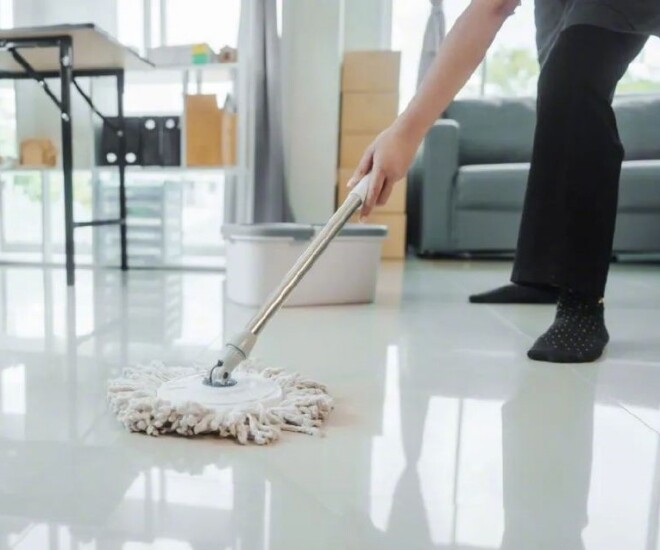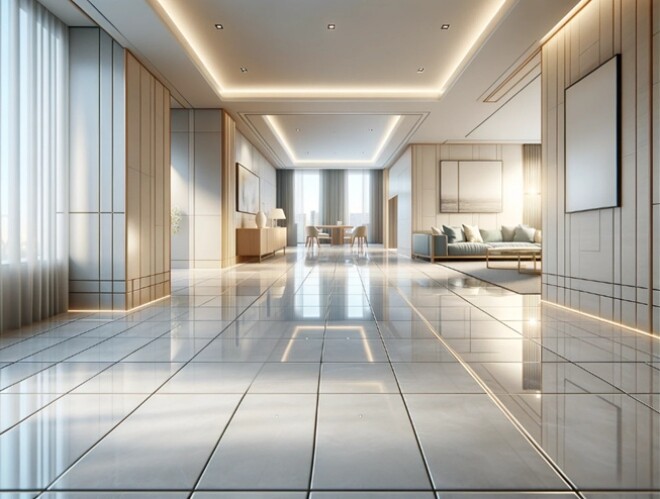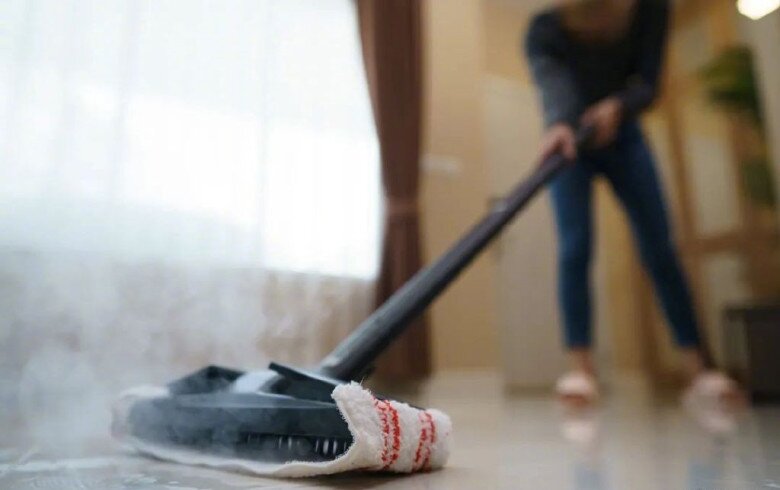Have you ever wondered why, despite your best cleaning efforts, your mop seems to be the source of an unpleasant odor? Where does this smell come from? Is it because the mop itself is dirty, or is it a result of chemical reactions during the cleaning process? Or could it be related to the type of floor tiles you have?

Unraveling the Mystery of the Unpleasant Odor After Mopping
– A Dirty Mop
The unpleasant odor you experience after mopping is most likely caused by your mop. Many people don’t pay attention to properly drying and storing their mop after use. They might leave the wet mop in the bucket or in damp areas like the bathroom.
When the mop remains damp for an extended period, microorganisms thrive and actively produce foul-smelling compounds such as hydrogen sulfide (H₂S), ammonia (NH₃), and organic acids in anaerobic conditions (lack of oxygen).
Additionally, the mopping water may contain high levels of nitrogen, phosphorus, and organic matter, which can promote the growth of algae. If you use a phosphorus-based detergent, this issue can become more severe. When the algae die or are deprived of oxygen, they release unpleasant-smelling gases like H₂S or dimethyl sulfide.
– Poor Water Quality
In some areas, water containing high levels of colloidal and organic compounds can also be a source of the odor. These organic compounds, when broken down by microorganisms, can produce gases such as trimethylamine, trimethylamine oxide, and dimethyl sulfide, all of which have a strong characteristic odor.
– Low-Quality Floor Tiles
It’s not just the mop that can be the culprit; low-quality floor tiles can also contribute to the odor. Some types of tiles, such as “black core” or “yellow core” tiles that are not properly fired, can emit sulfur-containing gases like SO₂ or H₂S during the manufacturing process. These gases can get trapped in the tiny pores on the tile surface.
Additionally, these tiles often have a hollow structure, which makes them highly absorbent. When water seeps into the tiles and comes into contact with the dust and debris inside, it can result in a persistent unpleasant odor.

Are Glazed Tiles the Only Source of the Unpleasant Odor?
There is a common misconception that the unpleasant odor is solely attributed to glazed tiles. Some people believe that only glazed tile floors cause the odor, while wooden floors do not. However, this is not entirely accurate.
In reality, the odor is not directly related to the floor material but is mostly influenced by how you use and maintain your mop, as well as the quality of your water. Whether it’s glazed tiles or a wooden floor, if your mop is constantly damp, filled with dirty water, or the water is not changed frequently, it can result in a foul odor.
How to Get Rid of the Unpleasant Odor After Mopping
To avoid the unpleasant odor when mopping, consider the following measures:
– Regularly Clean Your Mop
During the mopping process, change the mopping water periodically. Ideally, change the water after each dip of the mop to ensure effective cleaning.
After mopping, immediately rinse and dry the mop in a well-ventilated area like a balcony. Avoid leaving the mop in damp places. Similarly, make sure to clean and dry the mop bucket after use.
– Use Specialized Cleaning Pads for Floors
These cleaning pads typically contain surface-active agents, biologically degradable enzymes, antibacterial agents, and fragrances.
When mopping, simply add one of these pads to the water. It will help dissolve dirt effectively and neutralize odors. In addition to removing stains, these products leave a pleasant fragrance on the floor.
– Opt for a Steam Mop Instead of a Traditional Mop
A steam mop is an efficient cleaning device that uses steam to sanitize and clean floors. It works by heating water to produce steam, which is then used to clean and disinfect surfaces.
Not only does it effectively clean, but it also kills bacteria due to the high temperatures. Remember to clean and dry the mop head after use to prevent odors the next time you mop.

Steam mop.






























